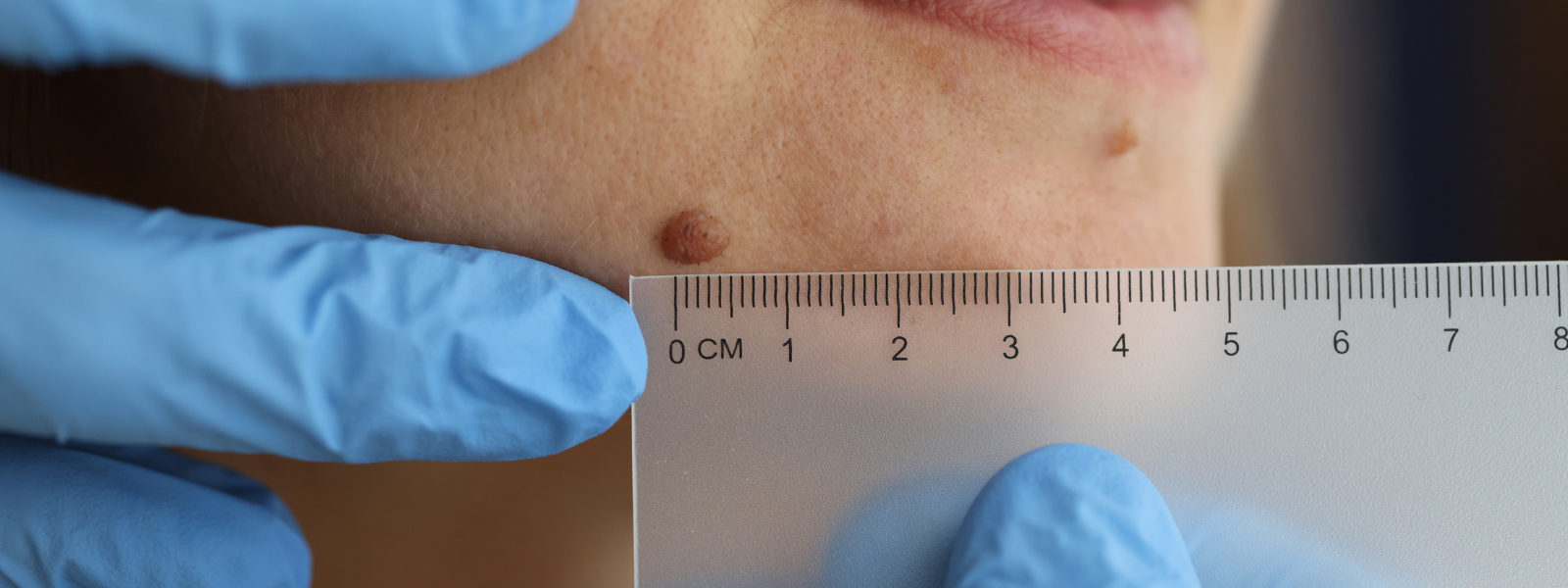Squamous Cell Carcinoma

Overview
Squamous Cell Carcinoma
Squamous cell carcinoma or cutaneous squamous carcinoma is common cancer that starts in the middle and outer layers of the skin. More than 200,000 people in the U.S. are diagnosed with squamous cell carcinoma each year. Although not usually life-threatening, squamous cell carcinoma can be very aggressive. Untreated, squamous cell carcinoma can grow large and metastasize to other parts of your body.
While skin cancers typically form in areas with high sun exposure, such as the face, ears, scalp, arms, neck or back of the hands, squamous cell carcinoma can develop in almost any place on your body. Anyone can get squamous cell carcinoma, but it is most common in people who:
- Don’t use sunscreen
- Live in a sunny place
- Have light-colored eyes
- Spend a lot of time outdoors
- Have naturally red or blonde hair
- Have family members who have had skin cancer
- Have a history of a lot of sun exposure or sunburn
- Have xeroderma pigmentosum, a rare genetic disorder
- Have a personal history of precancerous lesions or skin cancer
- Have fair skin that tends to freckle or burn when exposed to sunlight
- Have a weakened immune system or who take medicines that suppress the immune system
Squamous cell carcinoma is aggressive and can spread to your lymph nodes or other organs, and can be fatal if left untreated.
Symptoms
Symptoms of Squamous Cell Carcinoma
Because squamous cell carcinoma can occur anywhere, you should examine your body regularly for signs. It is good to have a partner check places that you cannot see to ensure you don’t have any indications of squamous cell carcinoma.
Signs of squamous cell carcinoma include:
Diagnosis
Squamous Cell Carcinoma Diagnosis
Diagnosis of squamous cell carcinoma begins with an examination of your skin. Besides questions about your and your family’s medical history, your doctor may ask questions about when you first noticed it, if it has changed, or if it is bothersome. If your doctor suspects you have squamous cell carcinoma, they may order additional tests, such as a biopsy. Before the biopsy, the doctor will numb the area where they will take a small sample of your skin to analyze under a microscope.
Treatments
Squamous Cell Carcinoma Treatments
Treatment for squamous cell carcinoma depends on its size, stage, location and the patient’s overall health.
Small Squamous Cell Carcinomas
Small squamous cell carcinomas are usually early-stage and easily treated with minor surgery.
Surgical excision
Surgical excision can remove (excise) cancer from the affected area and part of the healthy tissue. The surgeon may also remove nearby lymph nodes depending upon how advanced the cancer is. Learn more >>
Chemotherapy creams and ointments
Chemotherapy creams and ointments applied directly to the lesion (topically) in early-stage lesions.
Curettage & electrodessication (C & E)
Curettage & electrodessication (C & E) involves scraping away the surface of the carcinoma with a curet (a small spoon-shaped device). After scraping away the lesion, your doctor will sear the base of the squamous cell carcinoma with an electric needle.
Advanced Squamous Cell Carcinomas
Mohs surgery
Mohs surgery removes the squamous cell carcinoma layer-by-layer so the surgeon can examine each layer until all abnormal cells are removed. Mohs surgery is appropriate if squamous cell carcinoma is recurring on a sensitive area such as the face or on larger growths to minimize the removal of healthy tissue while still getting the entire growth. Learn more >>
Radiation therapy
Radiation therapy uses high-energy beams where surgery isn’t feasible or in cases where surgery cannot remove the entire growth.
Metastasized Squamous Cell Carcinomas
If the carcinoma has spread to lymph nodes or other parts of the body, then your doctor may consider three additional options.
Chemotherapy
Chemotherapy is delivered orally, intravenously or both and uses a mix of chemicals to target any quickly dividing cells.
Targeted therapy
Targeted therapy works differently from chemotherapy by targeting weaknesses in squamous cell carcinomas.
Immunotherapy
Immunotherapy drugs can help fight cancer. Cancer cells sometimes produce proteins that help them hide from your immune system. Immunotherapy drugs block the ability of cancer to hide, allowing your body to see the cancerous cells.
Specialists

